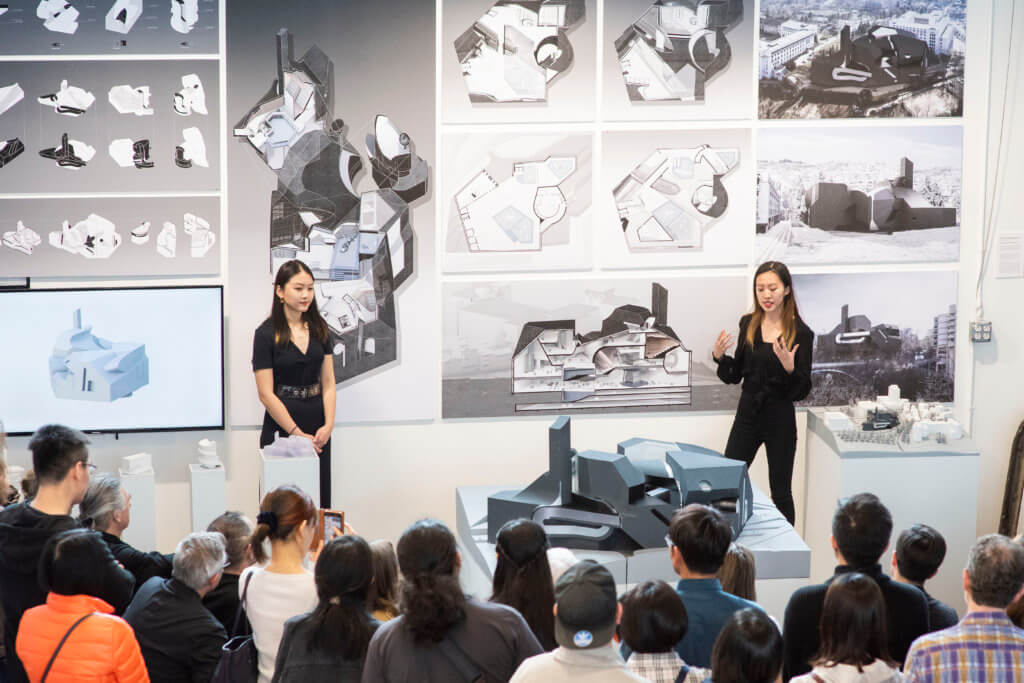Wenhao Huang left home two years ago, drawn to an aesthetic that stood out from over 1,800 architecture programmes offered in the US. He endured a 14-hour flight across 6,717 miles from Chengdu, China to get to the Southern California Institute of Architecture (SCI-Arc) because “I couldn’t find the same quality of student work that I saw at SCI-Arc elsewhere.”
Like many others before him, Huang saw the potential in store for him at SCI-Arc. It was reflected clearly to him in their Graduate Thesis works, an annual smorgasbord of new perspectives in architecture and design. Now, the second-year Bachelor of Architecture (B.Arch) student is a living testament to how else a student stands to evolve from SCI-Arc’s innovative, experimental, and radical approach—from pedagogy to facilities and so much more.
“SCI-Arc gives you tonnes of opportunities to discover and explore instead of being fed with a silver spoon. Photogrammetry, AI learning, Robot House—you always get guidance on the potentials, and you are to explore the unknown with your own creativity,” says Huang.
SCI-Arc is an institution that is relentlessly expanding, raising ambitions, and astonishing the world. Located in the city of Mediterranean climate, Los Angeles, SCI-Arc is a world-renowned centre of innovation and one of the nation’s few independent architecture schools.

Source: SCI-Arc
“SCI-Arc is where architects become mad scientists. It is where art, science, and industry converge and new futures unfold. At SCI-Arc we forecast the migrations of culture. We stare down complex technologies and command them to do our bidding. We are agile and street smart,” says Hernán Díaz Alonso, SCI-Arc Director/CEO.
“Where others drown in the myriad flows of urban life, we thrive and choreograph their movements. We are prophets of beauty, broadcasters of ideas, and tellers of stories. We are builders, leaders, and dreamers,” he adds.
SCI-Arc is home to 500 students and 80 faculty members, and for nearly over five decades now, its reputation as a ground-breaking institution for innovation and architectural experimentation precedes them. “We provide an environment that encourages an open exchange of creative ideas and technical knowledge through a collaborative educational model with a team of practitioners and theorists at the top of the field,” says Elena Manferdini, Graduate Programmes Chair.
At SCI-Arc, students gain exposure to artists, practitioners, historians, theorists, and even film stars. They are trained not just to be architects, but to push boundaries as designers and problem solvers at large. Following in the footsteps of Renaissance genius Leonardo da Vinci and Pritzker Prize laureate Hans Hollein, SCI-Arc graduates are recognised for their interdisciplinarity across arts and science.

Source: SCI-Arc
As a Master of Science in Fiction and Entertainment student, Attilio Bonelli gets to draw from several disciplines, developing an expertise in worldbuilding, storytelling, and production. “I am now obtaining a critical view on the subject which I believe is possible to get in only a few institutes. I can feel an avant-garde atmosphere in my classes,” he says.
Known for its global reach and radically fresh responses, SCI-Arc engages with the architecture community and expands their practice beyond education. They collaborate with organisations around the world in three ways: Satellite Initiatives, a Study Abroad Programme, and Exchange Programmes—all of which should resume once travel restrictions are loosened.
SCI-Arc Graduate Thesis Weekend is its largest annual event where critics, architecture professionals, as well as SCI-Arc faculty members and students come together to celebrate uncommon visions. How does it work? Simple. Students put forward their masterpieces, and industry professionals and critics review them.
This year, as the Graduate Thesis 2020 was held remotely, SCI-Arc invested extensively in its online platforms and promoted new ways to virtually gather and broadcast live, allowing the event to reach a larger audience than ever before.

Source: SCI-Arc
As part of the institution’s efforts to streamline remote learning without compromising on strategic skill sets, SCI-Arc adopted the latest technologies to make first-person experiences possible to enrich students’ worldviews. These enabled experimentation and exploration of new forms using digital innovations, including the wildly complex virtual models—for which SCI-Arc students are known—dystopian narrative films, and much more.
According to one of the 2020 Gehry Prize winners Saleh Jamsheer, he approached his thesis with the goal of doing “what I felt most passionate about, disregarding whether people would criticise it for not being ‘architecture.’ It was an opportunity for me to find a way to bridge my interest in film with the knowledge I’ve acquired over the years of studying architecture.”
Another prize recipient Irvin Shaifa calls the thesis an “opportunity to pronounce positive futures without fully concretising any one path. It is a way to embolden various mindsets and environments that require constant change to retain their functionality.”
Follow SCI-Arc on YouTube, Instagram, Facebook, and Twitter.











